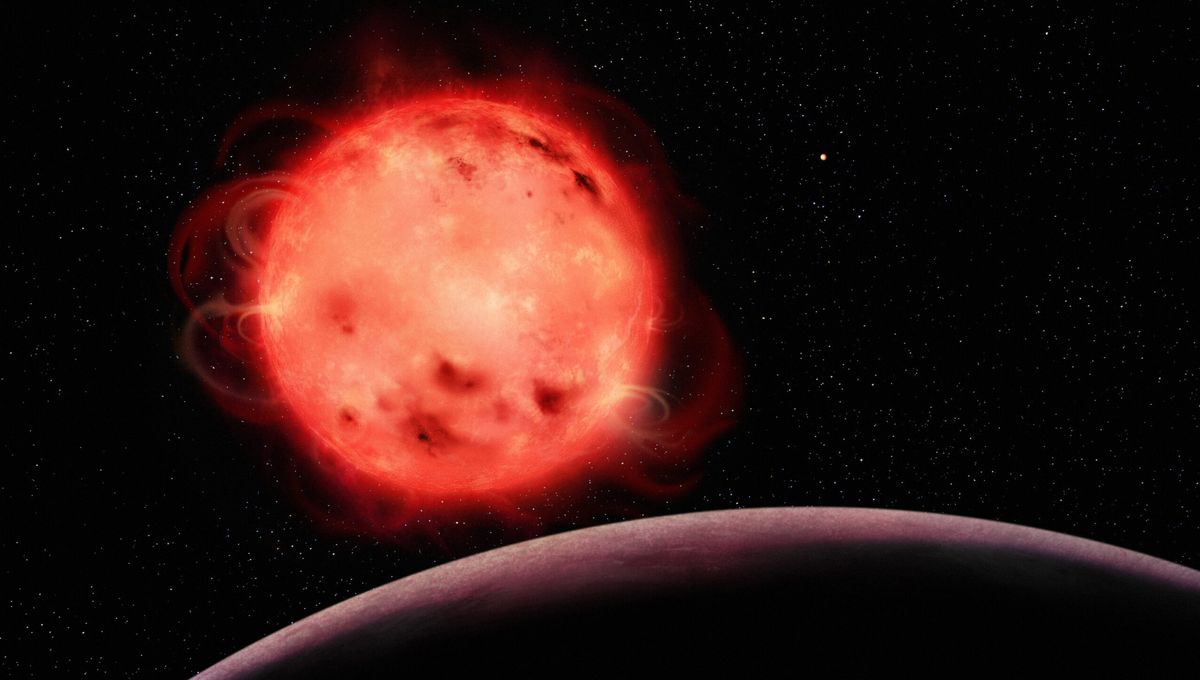
At about 40 light-years from Earth, there is the TRAPPIST-1 system. Seven Earth-sized worlds orbit very close to a red dwarf, much dimmer and cooler than our Sun. Three of these worlds might have the right conditions for life, and astronomers are very interested in studying all of these exoplanets. Observations so far, though, point to a different story.
The first two planets in the system, TRAPPIST-1 b and TRAPPIST-1 c are too close to the star to be habitable, but studying them and their potential atmospheres is very important. Using JWST, researchers estimate that they are most likely without any atmosphere, or at most, have a thin carbon dioxide atmosphere.
This might be a bit disappointing; if these worlds did have an atmosphere, then it would be more likely that planets d, e, and f have one too. The latest work on TRAPPIST-1 b highlights not just the lack of a significant atmosphere either – it also shows that the light of the star was negatively affecting the observations.
“Our observations did not see signs of an atmosphere around TRAPPIST-1 b. This tells us the planet could be a bare rock, have clouds high in the atmosphere or have a very heavy molecule like carbon dioxide that makes the atmosphere too small to detect,” Ryan MacDonald, from the University of Michigan, said in a statement. “But what we do see is that the star is absolutely the biggest effect dominating our observations, and this will do the exact same thing to other planets in the system.”
The team is now working on understanding the “contamination” of starlight in the so-called spectrum of the planet. Some of the light is needed, as astronomers use JWST to see light filtered through the atmosphere. The problem is that TRAPPIST-1 is quite an active star with dark spots and bright faculae, creating ghost signals in the spectrum.
“In addition to the contamination from stellar spots and faculae, we saw a stellar flare, an unpredictable event during which the star looks brighter for several minutes to hours,” lead author Olivia Lim, from the Trottier Institute for Research on Exoplanets at the University of Montreal, explained.
“This flare affected our measurement of the amount of light blocked by the planet. Such signatures of stellar activity are difficult to model but we need to account for them to ensure that we interpret the data correctly.”
“If we don’t figure out how to deal with the star now, it’s going to make it much, much harder when we look at the planets in the habitable zone – TRAPPIST-1 d, e and f – to see any atmospheric signals,” MacDonald said.
TRAPPIST-1 b receives about four times more radiation from its star than Earth does from the Sun – if it had a sizable atmosphere, this means it would be easy to spot. The result of no atmosphere or a very thin one, however, is consistent with previous observations with a different JWST instrument.
The study is published in The Astrophysical Journal Letters.
Source Link: Another TRAPPIST-1 Planet Seems To Lack Atmosphere, And The Star Is Not Helping